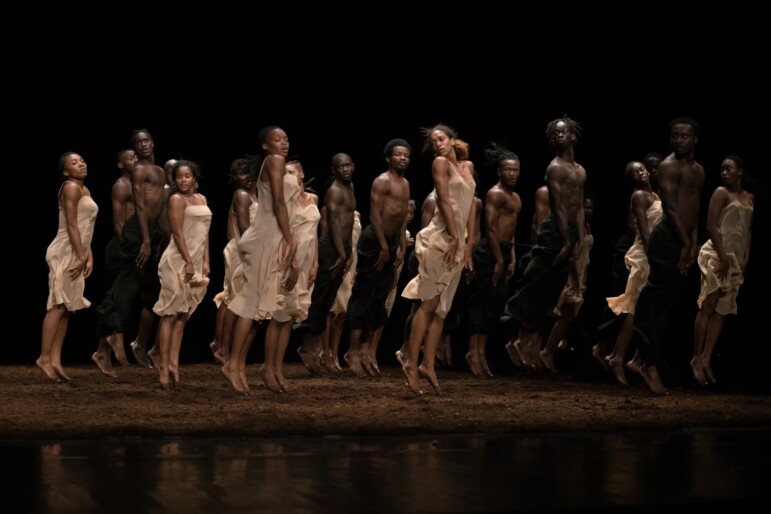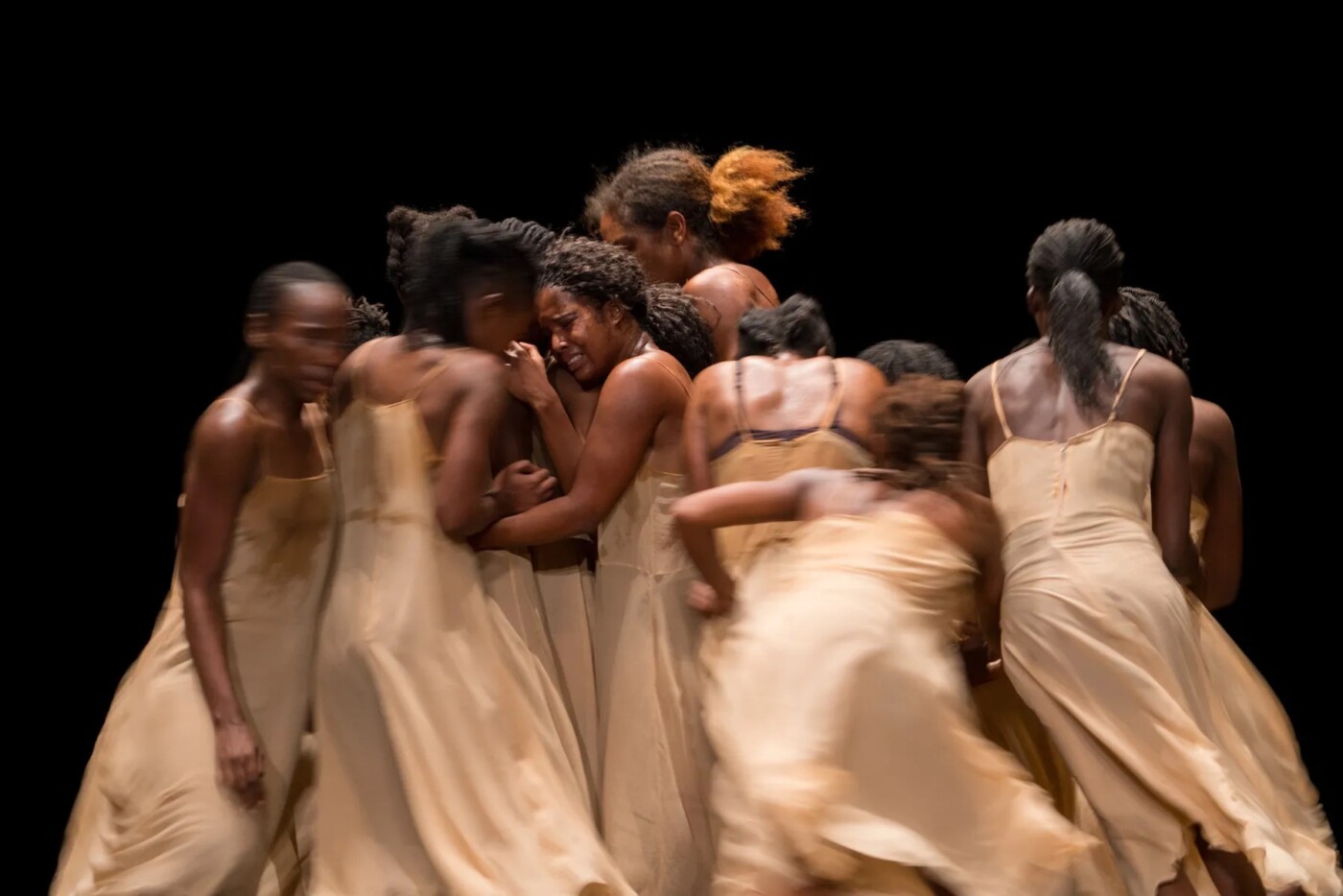For dancer Anique Ayiboe, entering the world of “The Rite of Spring” has been a journey of discovery.
The Togolese dancer, who has been traveling and performing the renowned 1975 Pina Bausch piece since the fall of 2021, says it’s been a once-in-a-lifetime experience.
Honoring Bausch, the groundbreaking German choreographer who died at age 68 in 2009, the touring production has now been seen in Germany, Spain, France, Ghana, the Ivory Coast, and Ayiboe’s native Togo, as well as recently in New York and Los Angeles.

Presented by the Pina Bausch Foundation in Germany, École des Sables, a dance center in Senegal, and Sadler’s Wells theater in London, the production comes to Berkeley under the auspices of Cal Performances for three performances on Feb. 16-18.
With more than 30 dancers from 14 African countries, the appearance features “The Rite of Spring” as well as a performance of “common ground(s),” co-created by Germaine Acogny, known as “the mother of African contemporary dance,” and Malou Airaudo, a longtime dancer with Bausch’s company, Tanztheater Wuppertal.
Ayiboe has been with the “Rite of Spring” tour from the beginning. In a recent phone call from a tour stop in Los Angeles, she said she had been studying African dance when she auditioned for the Bausch company in 2019; she went back to Togo, then returned to join the “Rite of Spring” tour.
She’s one of three dancers in the central role of the Chosen One—a character who is singled out from the group to make the ultimate sacrifice.
It’s a daunting assignment, one that requires tremendous strength, force and stamina. At first, she said, she found the role (which Bausch herself performed) to be enormously difficult. “I saw my name on the list, but I was afraid. It was too much, too hard,” she recalled. Since then, she’s performed the role over four years and 300 performances —and, she says, she’s learned a lot.
“It’s very physical,” she said. “I don’t know how Pina did this solo, but it’s more than dance. It’s not just about movement—it’s about you, what do you live in this moment? What is your story?”
Now, she says, it’s like a trance: “You have to be in another place, in your mind, and in your body.”
Igor Stravinsky’s avant-garde score propels the work, she adds: “In four years of doing this piece, we cannot understand how Pina could see it: the movement and the music are together.”
Still, she says, Bausch’s choreography fuses with the score in astonishing ways. “You don’t just dance the rhythm. You dance the whole music.”
Choreographers have set “The Rite of Spring” in vastly different ways over the years. American choreographer Mark Morris, for example, made his “Spring, Spring, Spring” a kind of ecstatic hoedown in nature.

Bausch’s vision, in contrast, is stark, elemental. The physical language is often anguished. The choreographer specified that it be performed on a dirt floor, which many dancers would find daunting. Cal Performances is fitting Zellerbach Hall to her specifications; Ayiboe said it feels familiar.
“In Africa, we used to dance on the ground,” she said. “We are more connected that way in our traditional dance.
“But with this piece, you are off-balance. I don’t know how Pina thought about this, bringing the earth onstage. But it gives us strength to go, to go.
“Even if you are off-balance, you are trained to go, to dance. I feel that in this piece I’m off-balance, but I find the strength to be grounded.”
“The Rite of Spring” is the first Bausch work Ayiboe has performed, aside from pieces she learned in her training. Dancing the role of the Chosen One, she said, is both an honor and a monumental challenge.
“This piece is about a ritual,” she said. “You must sacrifice something. It’s our normal life—we sacrifice something to have something good. It’s life. So for me, this role has meaning —to give yourself, good or bad. It makes me grow —physically, mentally, spiritually.
“For me as an African, it’s a great opportunity to do this piece, to go around the world, to keep Pina’s work alive. To show people that Africans can do this. I’m proud of us, and for me, I gain a lot of strength, a lot of knowledge, in this piece. It makes me go beyond my limits.”
Cal Performances presents “The Rite of Spring” by Pina Bausch and “common ground[s]” by Germaine Acogny and Malou Airaudo at 8 p.m. Feb. 16-17 and 3 p.m. Feb. 18 in Zellerbach Hall, University of California, Berkeley. Tickets are $38–$86 at (510) 642-9988 or calperformances.org.
